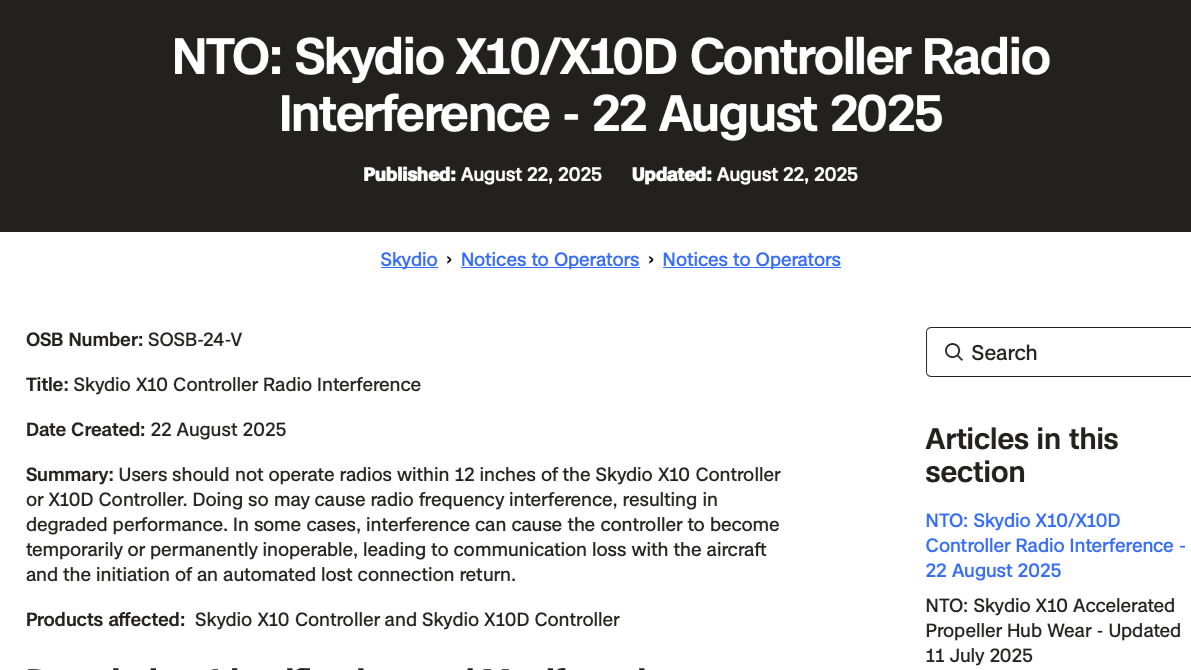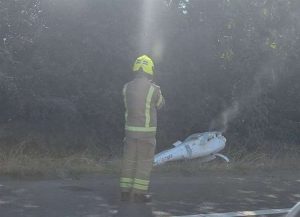Skydio Bulletin: A Crucial Alarm for Drone Operators
Drones are revolutionizing many sectors, from law enforcement to infrastructure inspection and national security. However, as drone deployment expands and automation escalates, industry leaders like Skydio encounter significant lessons about risk management, dependability, and accountability. “Skydio Bulletin: A Warning, Not an Exception” serves as an essential alert for stakeholders in drone technology.
Understanding the Skydio Bulletin
In 2025, the drone industry faced more than just minor technical hitches. The Skydio Bulletin announced a critical reliability concern: rapid wear of propeller hubs, following multiple incidents, including a high-profile NYPD drone crash that led to a rooftop blaze in New York.
Implication: If you believed such technical notifications are rare anomalies, reconsider. As drone operations become increasingly remote and autonomous (termed Drone as First Responder or DFR), even small mechanical imperfections can result in operational setbacks, damage to reputation, or increased regulatory intervention.
Safety in Hardware Reliability
The incident: On May 12, 2025, a Skydio X10 drone deployed by the NYPD failed due to a battery connector issue, leading to a rooftop fire. Skydio swiftly addressed this with real-time monitoring, automated failure alerts, and enhanced customer support connections.
The deeper concern, however, emerged with the discovery of accelerated wear on propeller hubs. The Skydio Bulletin, shared with operators and agencies, urged:
- Immediate inspections across fleets
- Adhering to new maintenance protocols
- Staying informed on manufacturer updates
This situation underscores a vital message: drones are integral to critical systems, and design oversights or cost-saving manufacturing steps can trigger significant, real-world events.
Drones: Beyond Simple Gadgets
Today’s drones are not mere hobby gadgets; they serve as indispensable robotic tools for first responders, utility firms, construction workers, and defense. Skydio programs include:
- National Security: Offering robust aerial intelligence with highly-secure sUAS (small Unmanned Aircraft Systems).
- Utilities & Inspections: Rapid fault detection to ensure uninterrupted service and enhanced safety.
- DFR (Drone as First Responder): Providing instant aerial support with autonomous launches, arriving swiftly on scenes.
Envision a scenario where such a fault occurs during a major rescue, power line inspection, or public event management. The risks extend beyond technical—affecting reputation, legal standing, and ethical duties.
Automation, BVLOS, and Emerging Challenges
Significant FAA updates (like Part 108/146) now permit sophisticated operations such as BVLOS (Beyond Visual Line of Sight) and single-operator multi-drone management. Skydio boasts:
- ADS-B integration for collision avoidance with manned aircraft
- Advanced autonomy features to identify and avoid both static and moving objects
- Remote Docking: Unsupervised launches and tasking, aiding fast response
Yet, increased automation translates to heightened risks, as there is less room for mechanical or software failure when human oversight dwindles.
Conclusion: As drones increasingly underpin public safety and critical infrastructure, previously “acceptable risks” evolve into a demand for “zero-tolerance” for failures.
Skydio’s Comprehensive Reactions
In response to the bulletins, Skydio has implemented:
- Analytics-driven fleet oversight: Monitoring to uncover risks across its entire customer base
- Automated software notifications indicating early hardware issues
- Refined maintenance manuals, stressing that physical inspections remain crucial even with predictive maintenance technologies
- Proactive customer initiatives, beyond basic web inquiries
However, even top manufacturers aren’t exempt from growing pains. When some police departments discovered tracking via SIM cards in promotional mail, Skydio had to address both ethical and reliability issues.
Proactive Measures by Operators
One cautious law enforcement body went as far as dismantling promotional mailers to remove embedded SIM cards, stopping privacy invasions in their tracks. User forums reveal demands for candid disclosures from manufacturers against mere promotional assurances.
After the NYPD incident, users emphasized understanding equipment limitations beyond advertised features. They praised Skydio’s immediate technical updates but noted: “A bulletin delivered too late is an improvement over none, but true safety stems from frequent risk communication, not wishful optimism.”
Creating a Strong Drone Strategy
For those looking to adopt or expand drone usage, insisting on:
- Comprehensive service bulletin access and authentic spare-part documentation
- Early alerts on hardware or firmware issues
- A clear distinction between marketing and safety messages
- Transparent equipment lifecycle guidelines, specifying hours or years before replacements
- Ethical data practices: outright consent and openness without covert tracking
Routine inspections are critical, echoing Skydio’s advisory.
An Industry Advisory: Learning from Skydio’s Challenges
Every aspiring drone maker must juggle rapid advancements with aerospace-grade reliability. Skydio’s recent dilemma serves as an industry alert, not merely a product recall.
- Assert transparency and obtain regular disclosures from suppliers.
- Maintain diligent upkeep as high-tech solutions can’t supplant human vigilance.
- View bulletins as standard resources rather than confidential matters.
- Engage in industry advocacy: with more automation comes the need for stronger regulatory standards.
Focusing on People, Not Just Technology
At Your Company, our objective prioritizes both human and practical considerations. Drones are resources, neither toys nor universal fixes. Our seasoned experts provide direct client briefings following new advisories. When industry leaders like Skydio, DJI, or Parrot encounter challenges, we utilize these moments to enhance protocols and instruct users.
Customer narratives demonstrate the importance of reliable teamwork—from fire chiefs pre-empting emergencies to utility managers averting costly disruptions via bulletins.
No fascination or high-tech brochure replaces the basic truth: Transparency plus Diligence equals Trust.
Embracing Lessons for Advancing Programs
The Skydio Bulletin underscores the dynamic environment of autonomous drones, reminding operators that the onus of safety and ethical use lies with them. Incorporate each update as an essential notice rather than an anomaly.
Key steps:
- Define clear procedures for interpreting and responding to manufacturer alerts.
- Blend in-person evaluations with digital diagnostics.
- Adopt a safety-oriented ethos: “Err on the side of caution.”
- Favor suppliers who exemplify integrity and accountability post-mishaps.
Drones have transformative potential. Yet, achieving this safely and ethically mandates that industry and users alike learn from every signal, especially the difficult ones.













